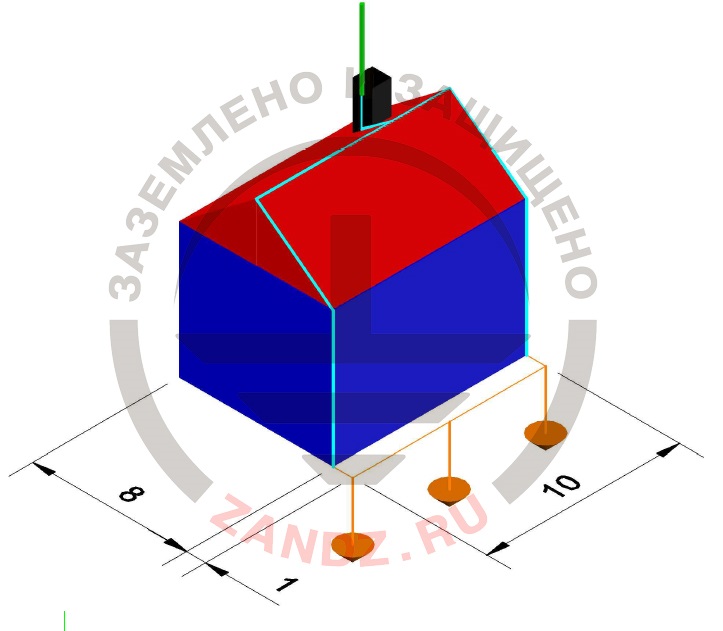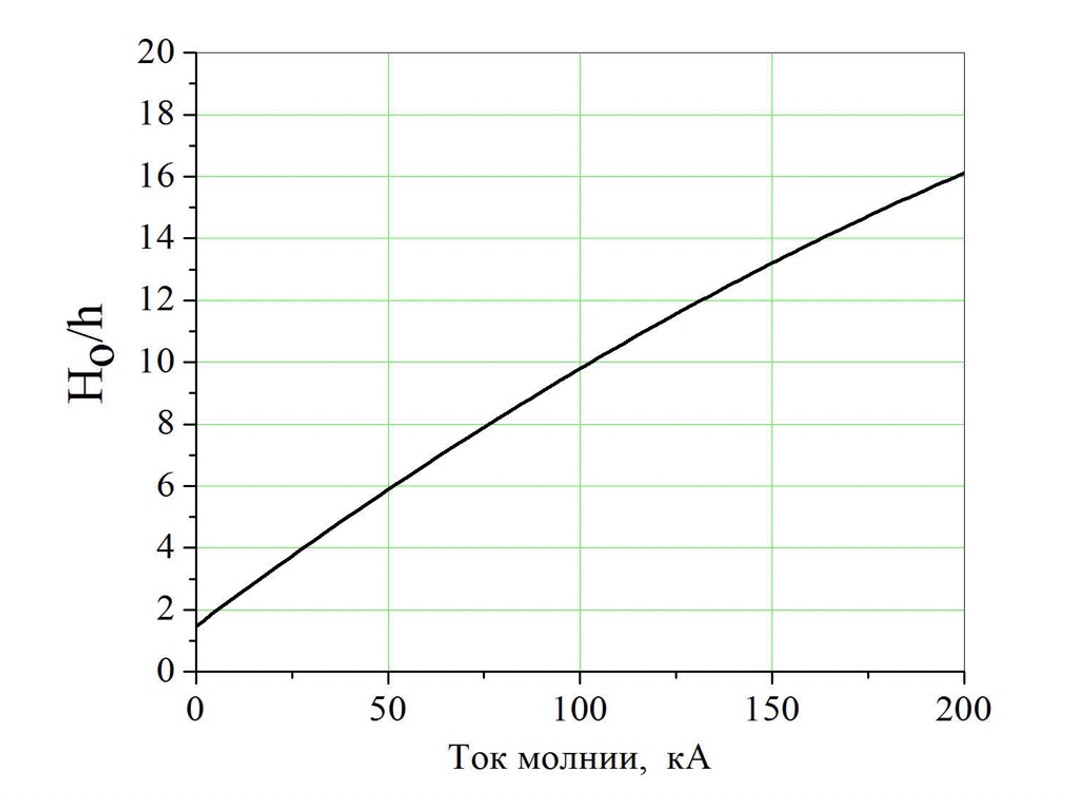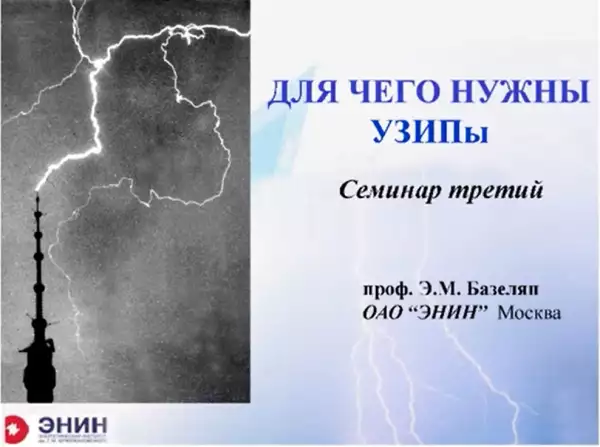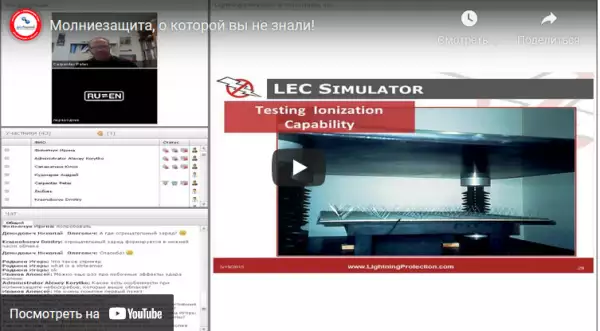When developing lightning protection, sometimes, disputes arise regarding pros and cons of a higher lightning rod over the lower one. Note that we are talking about the same protected facility and the same lightning rod locations on it.
One may think that the higher the lightning arrester, the better it is for the lightning protection. But the situation is not as simple as it seems.
The skilled persons know that the higher the lightning rods, the more lightnings it attracts. A chance to direct lightnings from all surroundings to the facility does not seem to be appealing. Each "excessive" attracted lightning bears unnecessary danger. Based on this, on the contrary, we would like to ensure the minimum height of the lightning rod.
Let's use a particular example to determine pros and cons of increased height of the lightning arrester so that each reader could make a decision on their own.
For the sake of clarity, let's choose a small country house with a single roof channel as a protected facility. Its layout and lightning protection scheme are provided in the figure below.

The lightnings will be attracted not only by your lightning rod. Lightning is interested in any high-rise facility, including the house itself. To determine the number of lightnings attracted by all process participants, let's make calculations in the special software. It is available on our website on a free of charge basis. For testing integrity, let's exclude all nearby facilities meaning that we have a single building in a field.
By calculating to take into consideration the lightning arrester height of 2 m, it becomes clear that the number of attracted lightnings will be equal to 2.2 in 100 years. The calculation result is provided here, see item "Total Strikes to the System".
By replacing in the calculation model the lightning arrester for 4 meters, we receive the increased number of strikes to the system equal to 2.9 in 100 years. Increase by 1.3 times is a noteworthy change. Reference to the second calculations.
Now, let's study the associated calculation results. Due to the increased lightning rod's height, the probability of the lightning breakthrough to the facility is only 4.5% vs 23% (see item "Breakthrough Probability to the System's Facilities" in the report). Moreover, the number of lightnings that may break through to the facility, i.e. an even more valuable indicator, has reduced by almost 4 times, 0.0013 vs 0.0050 according to item "Total Breakthroughs" in the reports.
We can summarize that the increase in the number of attracted lightning is an important value, but it is even more important to know what happens to them. Generally, the increased height of the lightning arrester suggests the growth of reliability of the lightning protection and reduced rate of discharges that have bypassed the lightning protection. This is what we want to achieve by installing the lightning protection system on the roof.
However, do not forget about the need to struggle with secondary effects of each lightning strike. Even a discharge caught by the lightning protection carries the strongest strike by induced and brought surges across the power facilities. Therefore, in addition to external lightning protection, we should install SDPs and ensure the main bonding system.
Related Articles:




